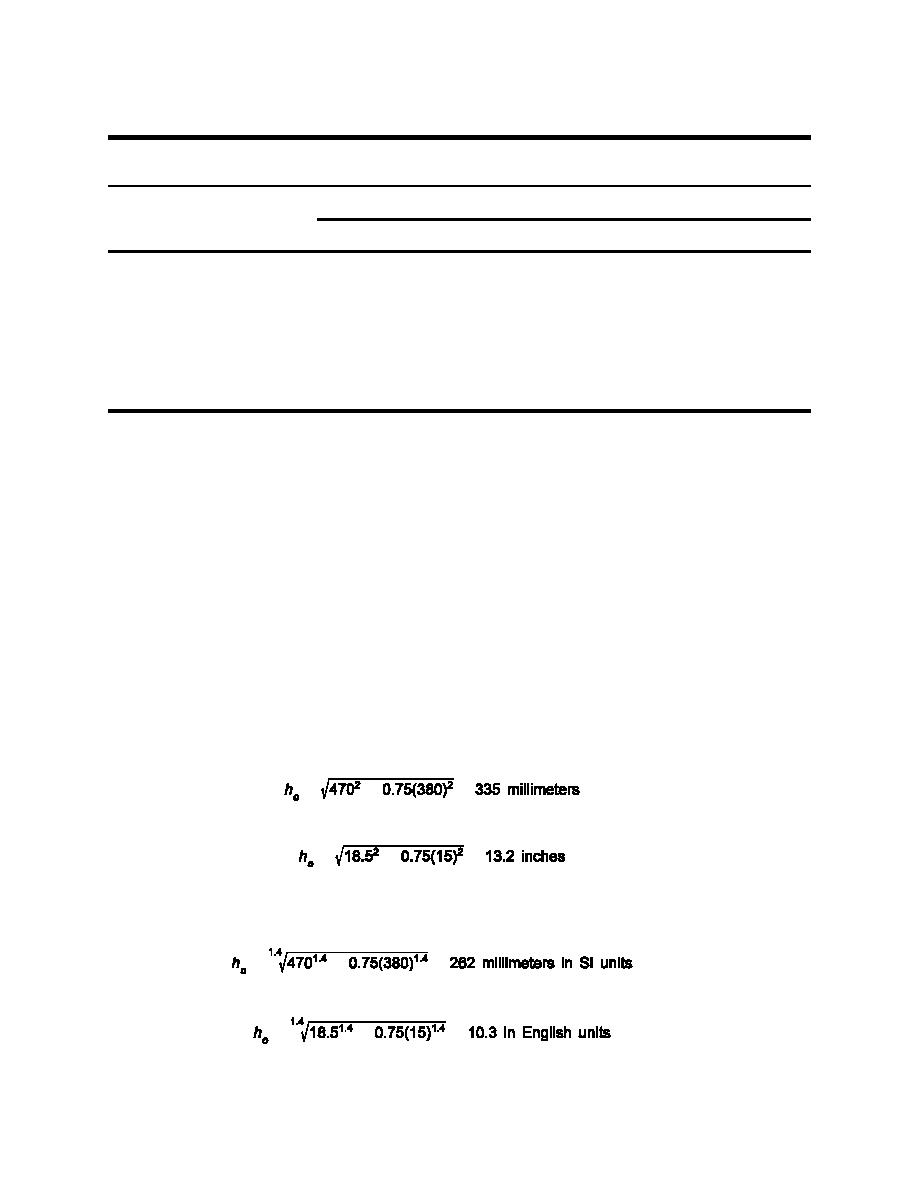
UFC 3-260-02
30 June 2001
Table 19-7
Relationship Between Cumulative Damage and PCC Thickness for Mixed Traffic
Damage
PCC Thickness
mm (in.)
C-141
B-52
F-15
C-17
Cumulative
406 (16)
1.37
0.37
0.00
4.02
5.76
457 (18)
0.27
0.11
0.00
1.02
1.40
508 (20)
0.05
0.03
0.00
0.25
0.33
558 (22)
0.00
0.01
0.00
0.06
0.07
610 (24)
0.00
0.00
0.00
0.01
0.01
this mix of traffic, most pavement damage is caused by the 12,500 passes of the C-17 aircraft. Although
the B-52 is a very heavy bomber aircraft, the 100 passes used for design at a reduced load cause minor
damage to the pavement. Because the F-15 aircraft is very light, its 25,000 passes cause practically no
damage to the pavement.
12. DESIGN EXAMPLE 3, OVERLAY DESIGN. The overlay design example presented is for the airfield
pavement illustrated in design example 1. The airfield had a 380-millimeter (15-inch) PCC originally
designed for the C-130 aircraft. After several years of service, the airfield is to be upgraded to the mixed
traffic presented in example 2. Based on the results of subgrade evaluation and following the design
procedures in design example 2, the required PCC thickness without a base layer is computed as
470 millimeters (18.5 inches). The existing pavement is in good condition structurally, and the C factor
for Equations 17-2 and 17-3 is equal to 0.75. Also, the flexural strength of the concrete in the existing
slab is very close to that of the overlay (therefore, hd = hc), and the required overlay thicknesses ho can
be computed from Equations 17-2 and 17-3 as follows:
a. Computation for Nonbonded Concrete:
'
&
'
'
&
'
b. Computation for Partially Bonded Concrete:
'
&
'
'
&
'
19-16



 Previous Page
Previous Page
